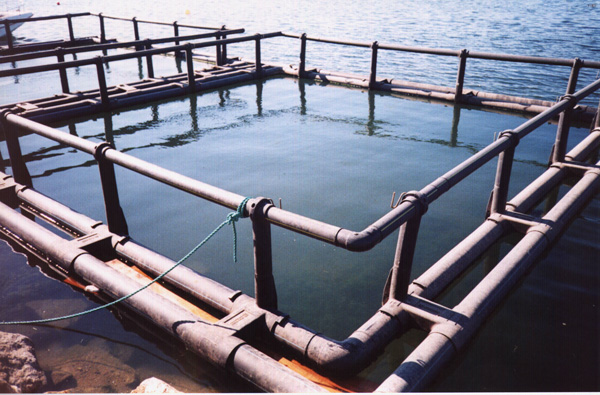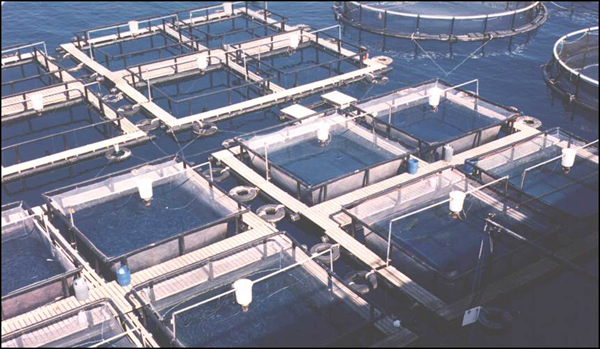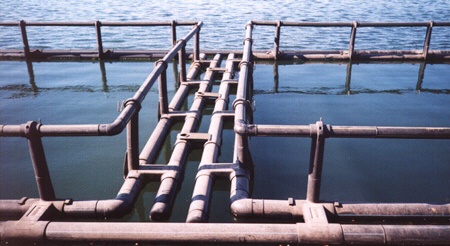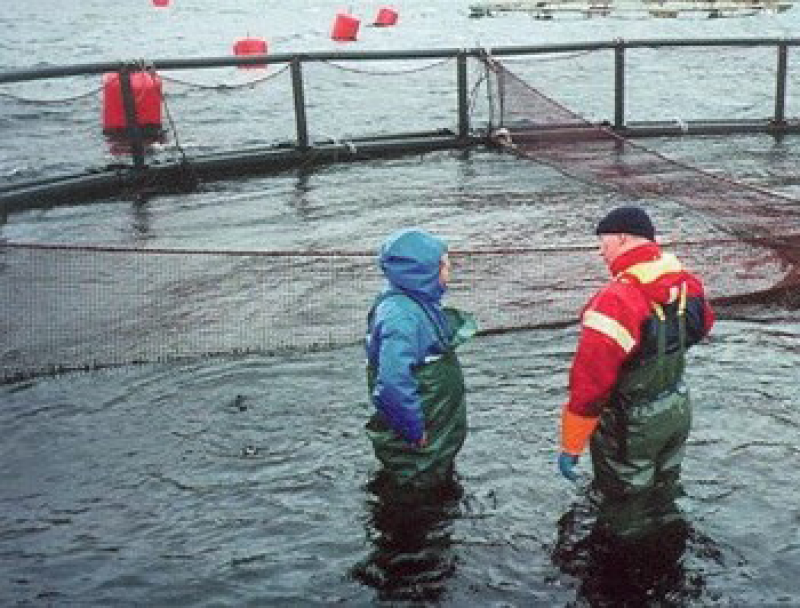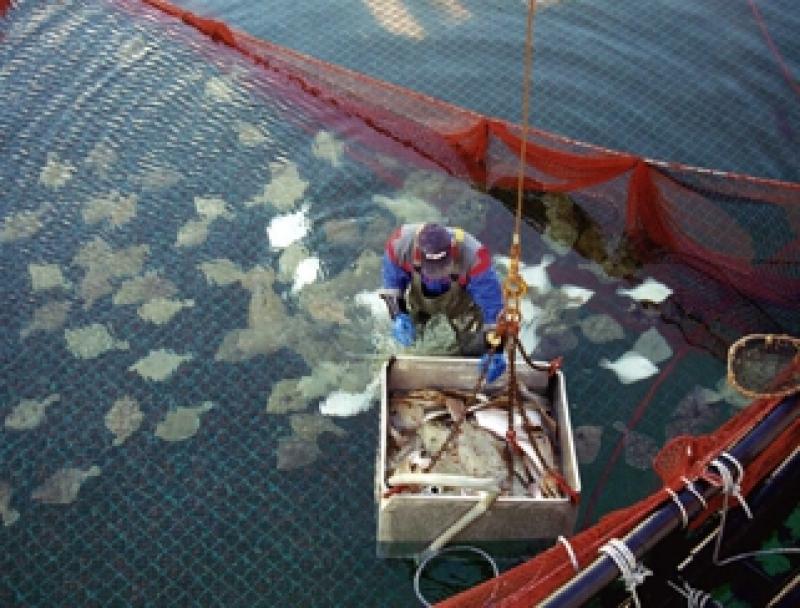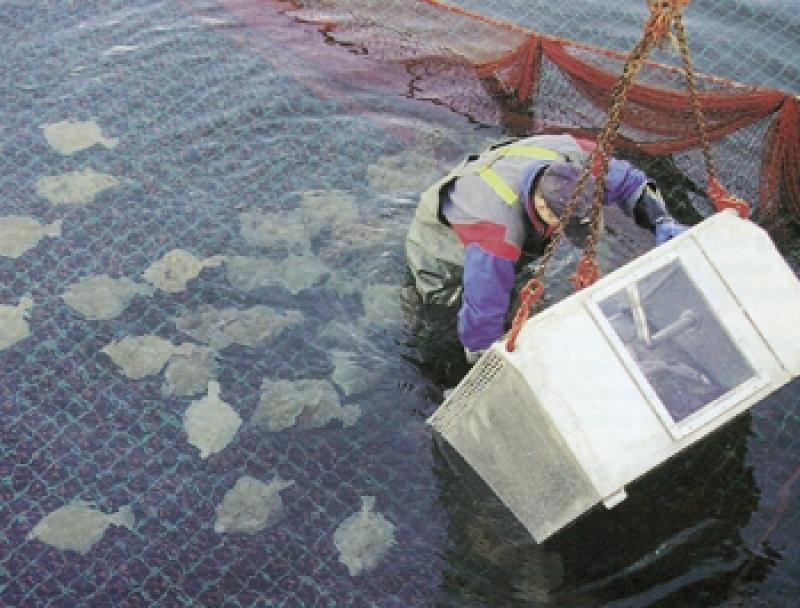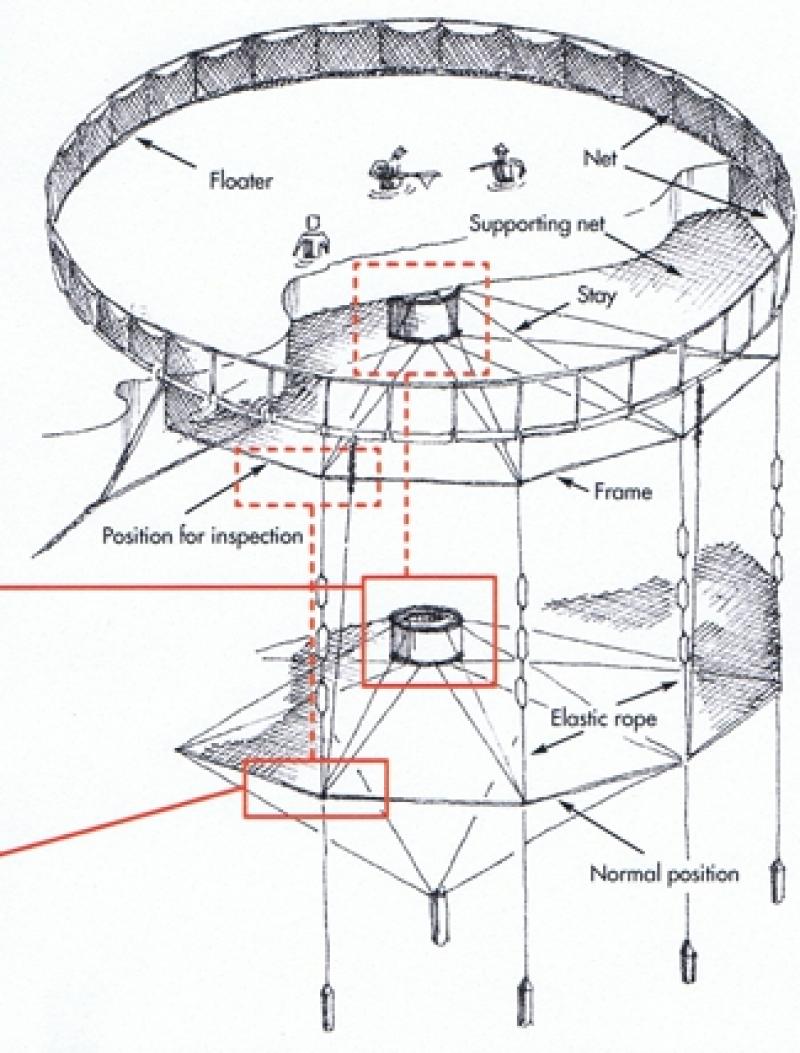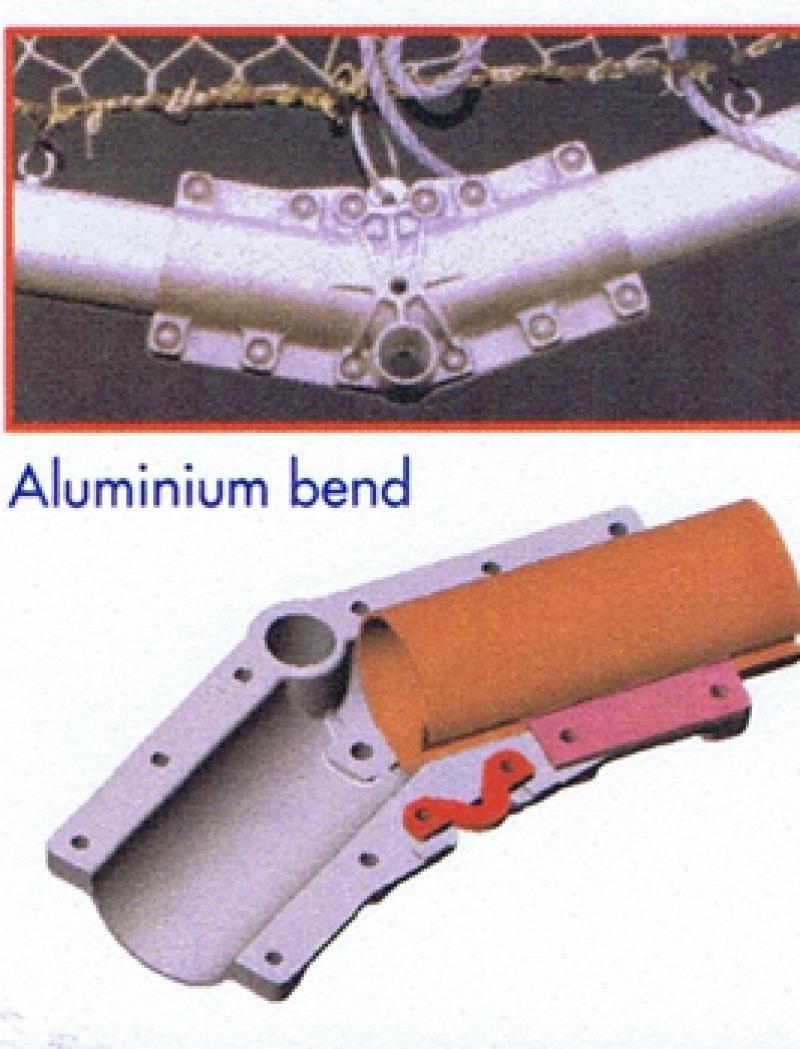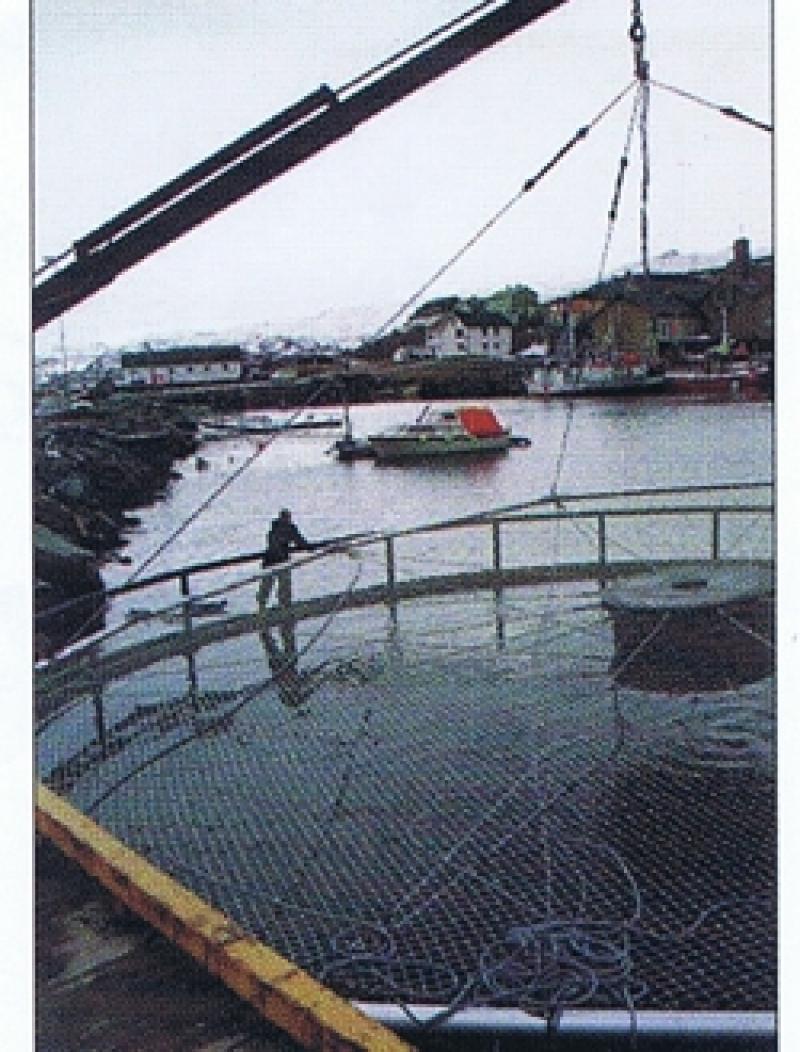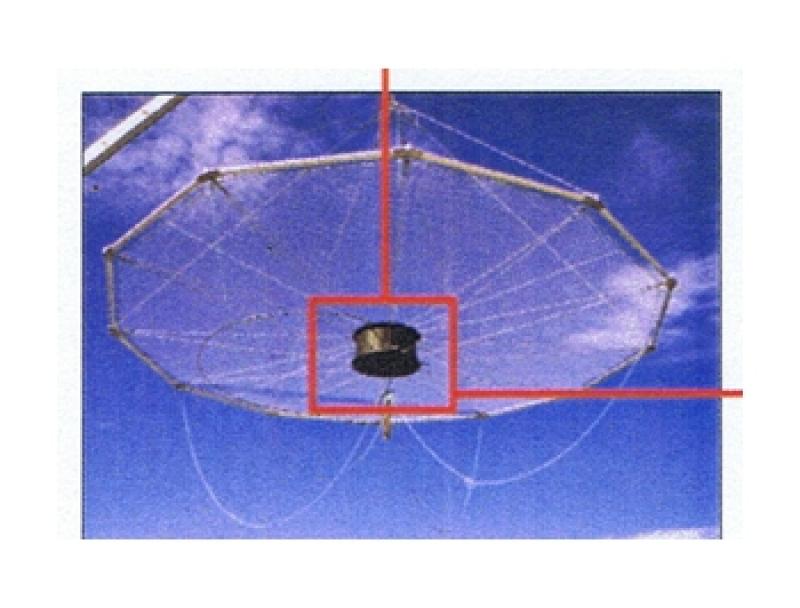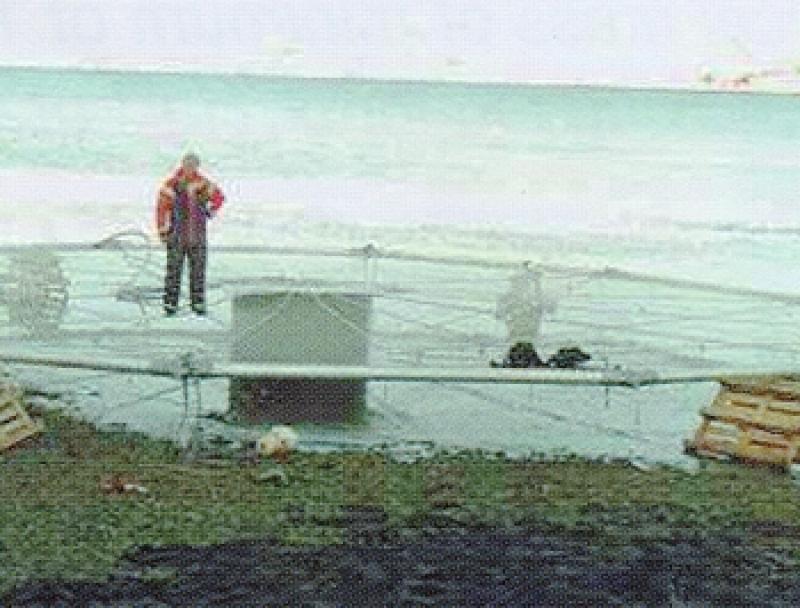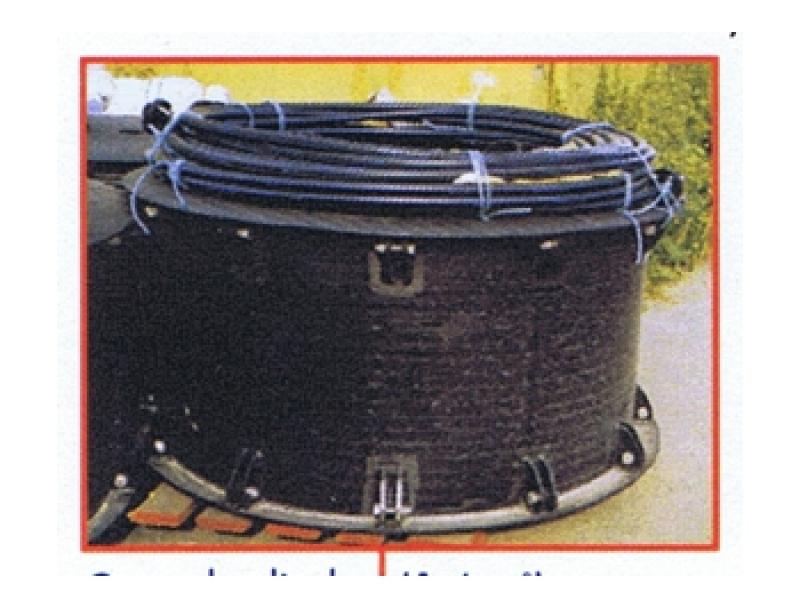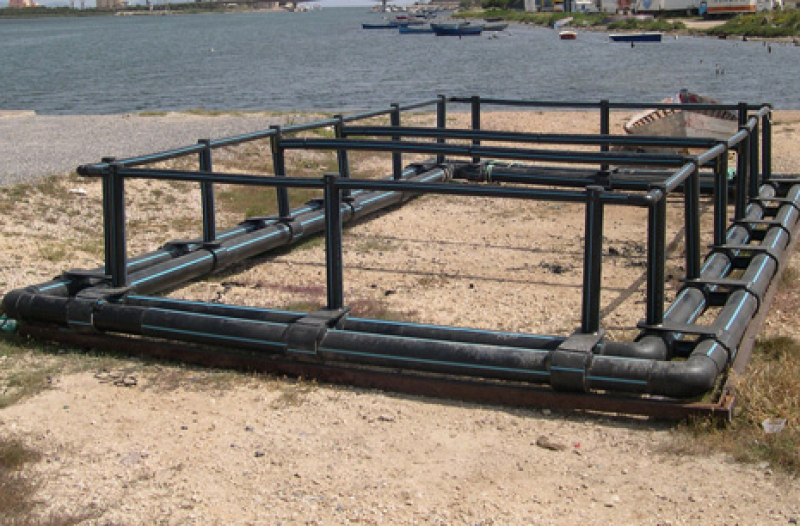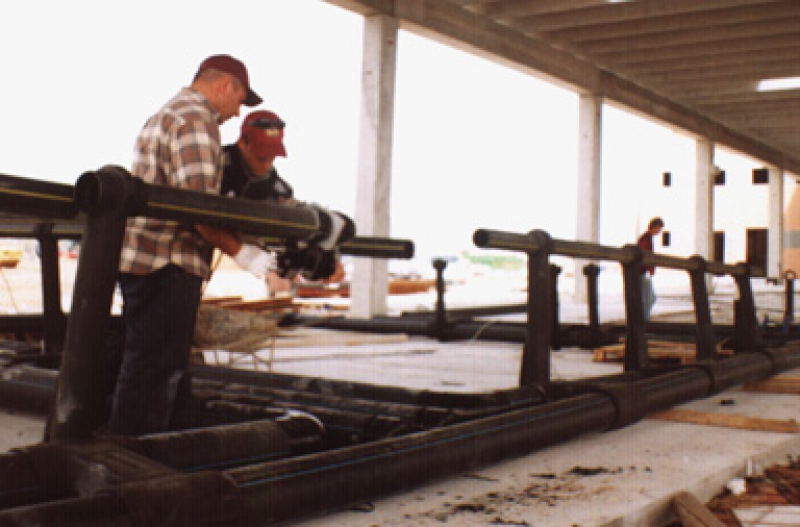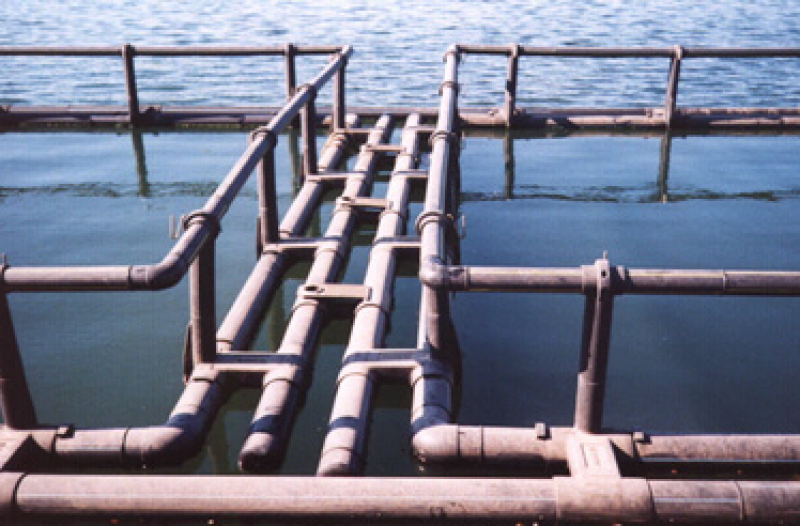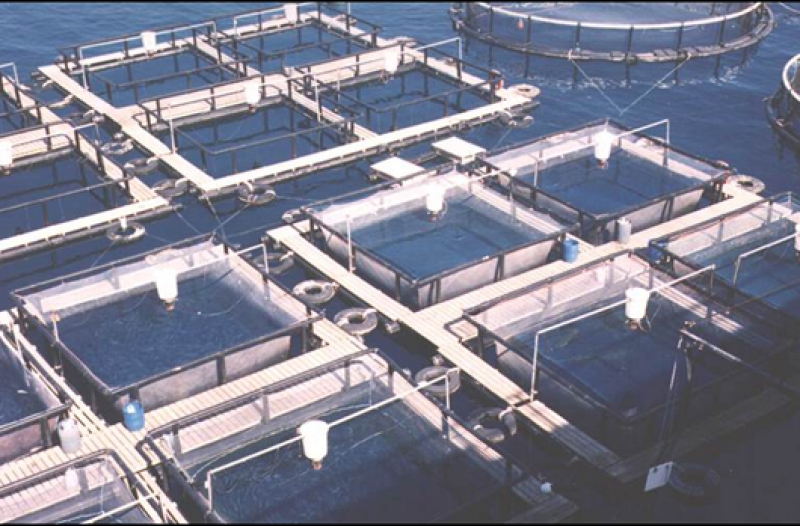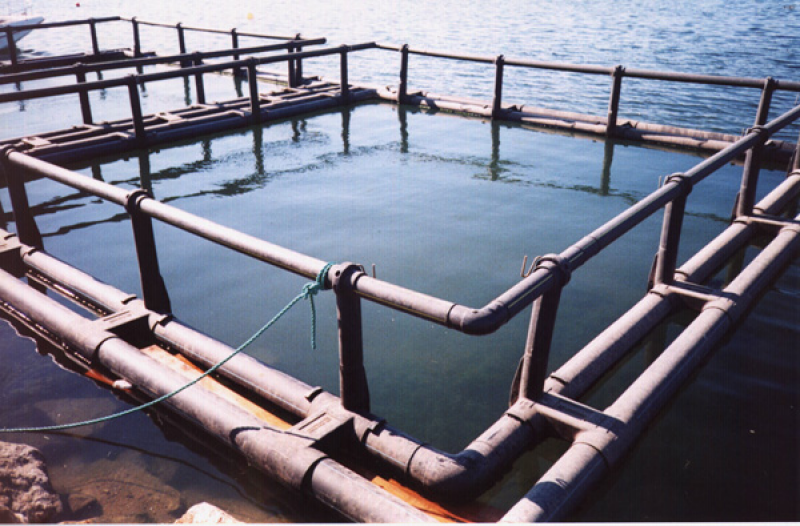FLAT FISH CAGES
The need to extend and diversiby the Norwegian aquaculture industry and a growing demand to store live seafood has led to the development of a flat-bottom net cage.
This technology has improved the first hand value of seafood and motivates a better utilisation of the coastal resources. It provides practical working conditions for the emergin sea-based halibut farming in Norway and is now being utilised abroad for species such as flounder and grouper.
An aluminium frame covered with a taut net supports the bottom of a traditional net. The bottom area is 180 m2 and the frame consists of 12 pipes connected with 12 bends. The depth of the bottom is modify pneumatically by inflating a central positioned cylinder. The bottom is kept horizontal at all times and elastic ropes eliminate the vertical movement.





 Services
Services Studies & Projects
Studies & Projects Research & Development
Research & Development